Guys,
Here are some more photos of hand built locks. Again, the are built only using 18th c tooling and techniques, although I do sometimes shorten the time to make the locks by using twist drills, but sometimes I use the 18th c spade drills too.
Here is a brass plate lock from a brass barreled rifled pistol of 0.469 cal.
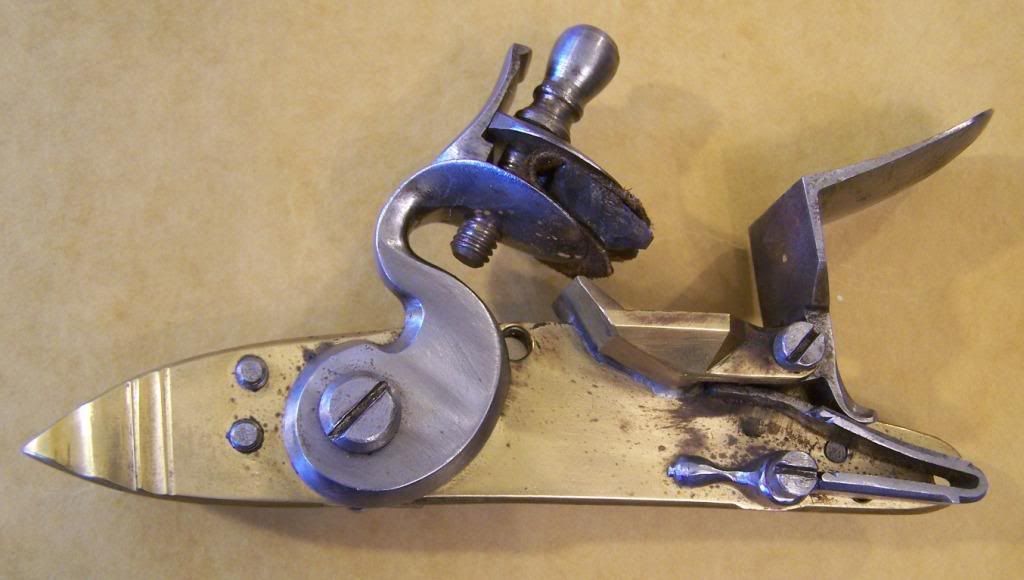
[
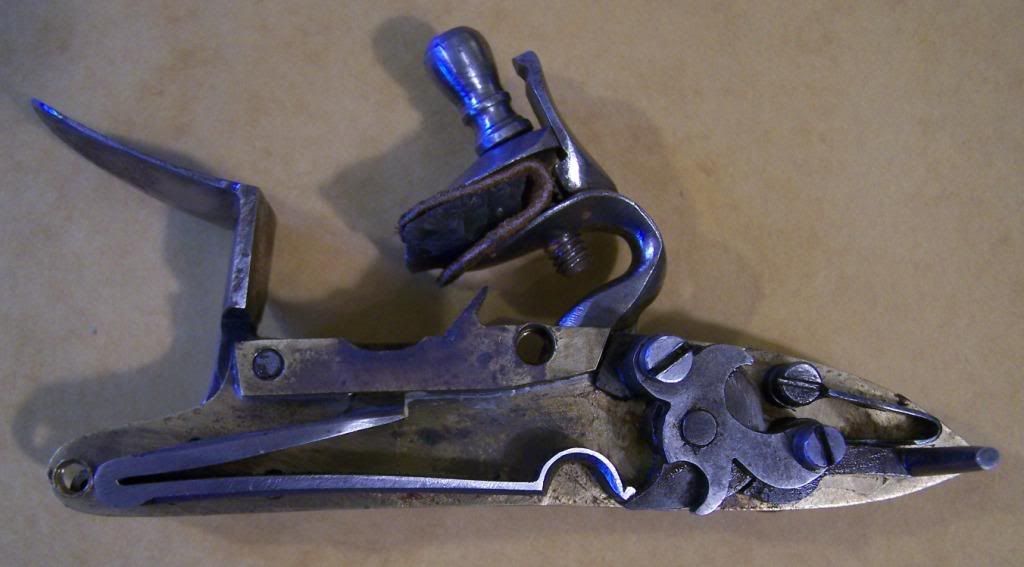
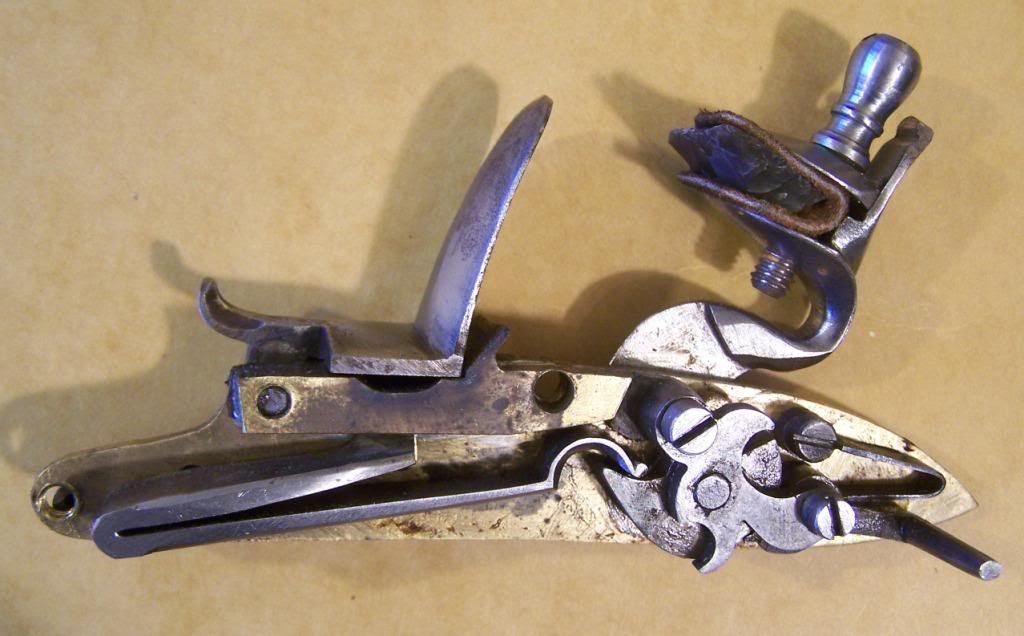
Here is a wrought iron lock from a wrought iron mounted pistol with a hand forged wrought iron barrel of 0.458 cal.
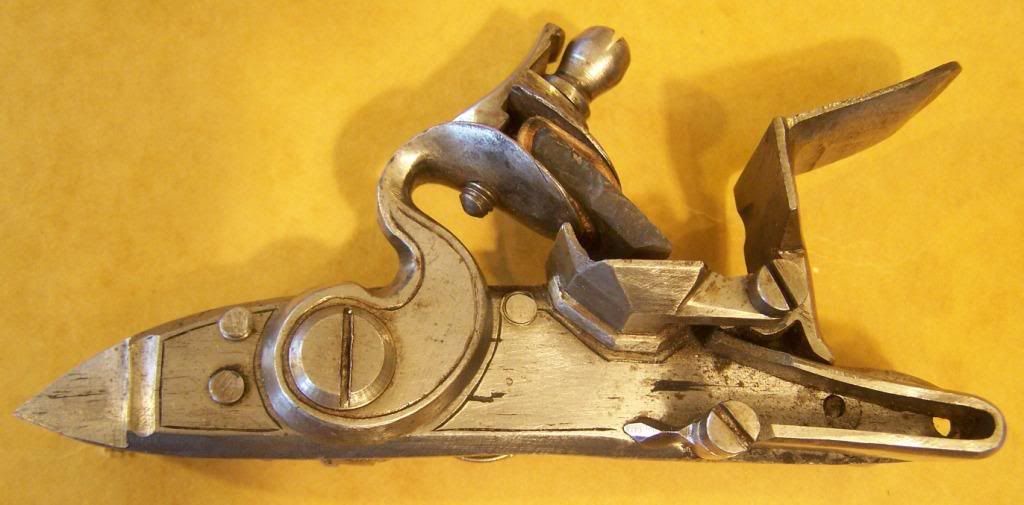
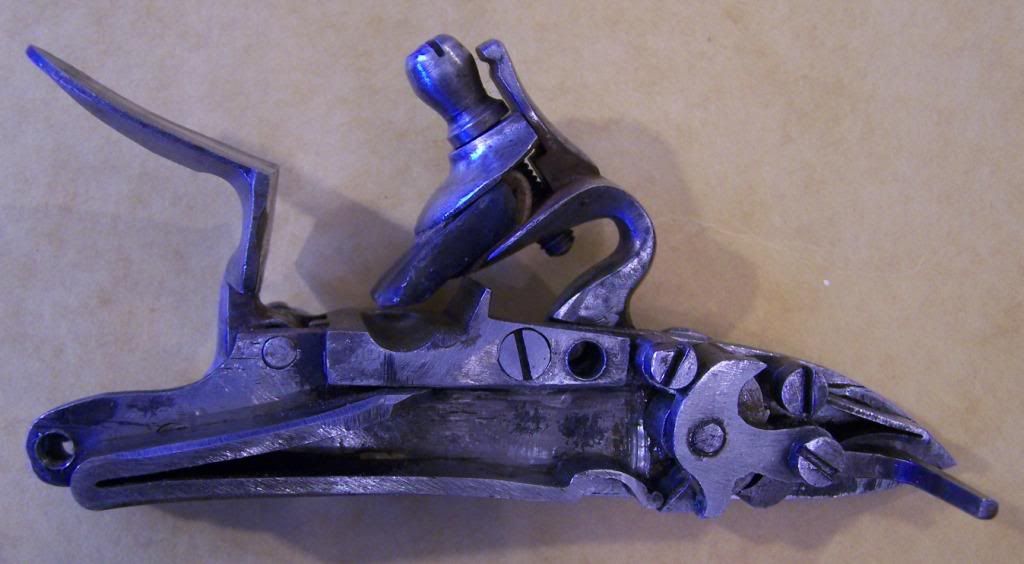
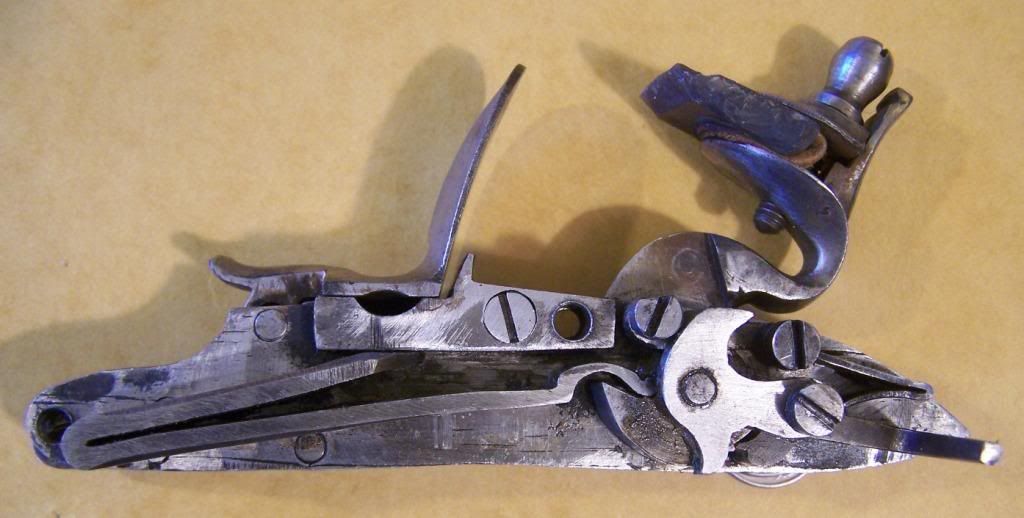
Notice that I like to make early style locks that had a long throw to the cock. The full cock places the hammer much farther back than the modern locks. Also when I make a barrel, I work at the bore until it is smooth and shiny with a square armory reamer, then I measure the size. Whatever it is - it is. Apparently I find making flintlocks very entertaining.
Jim Everett

